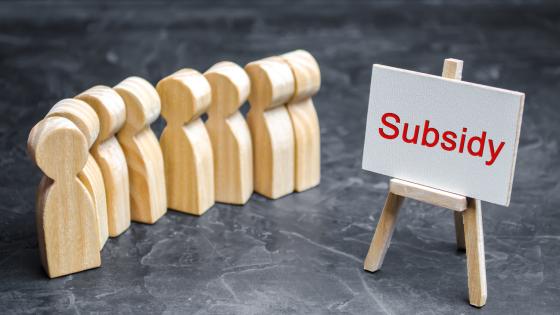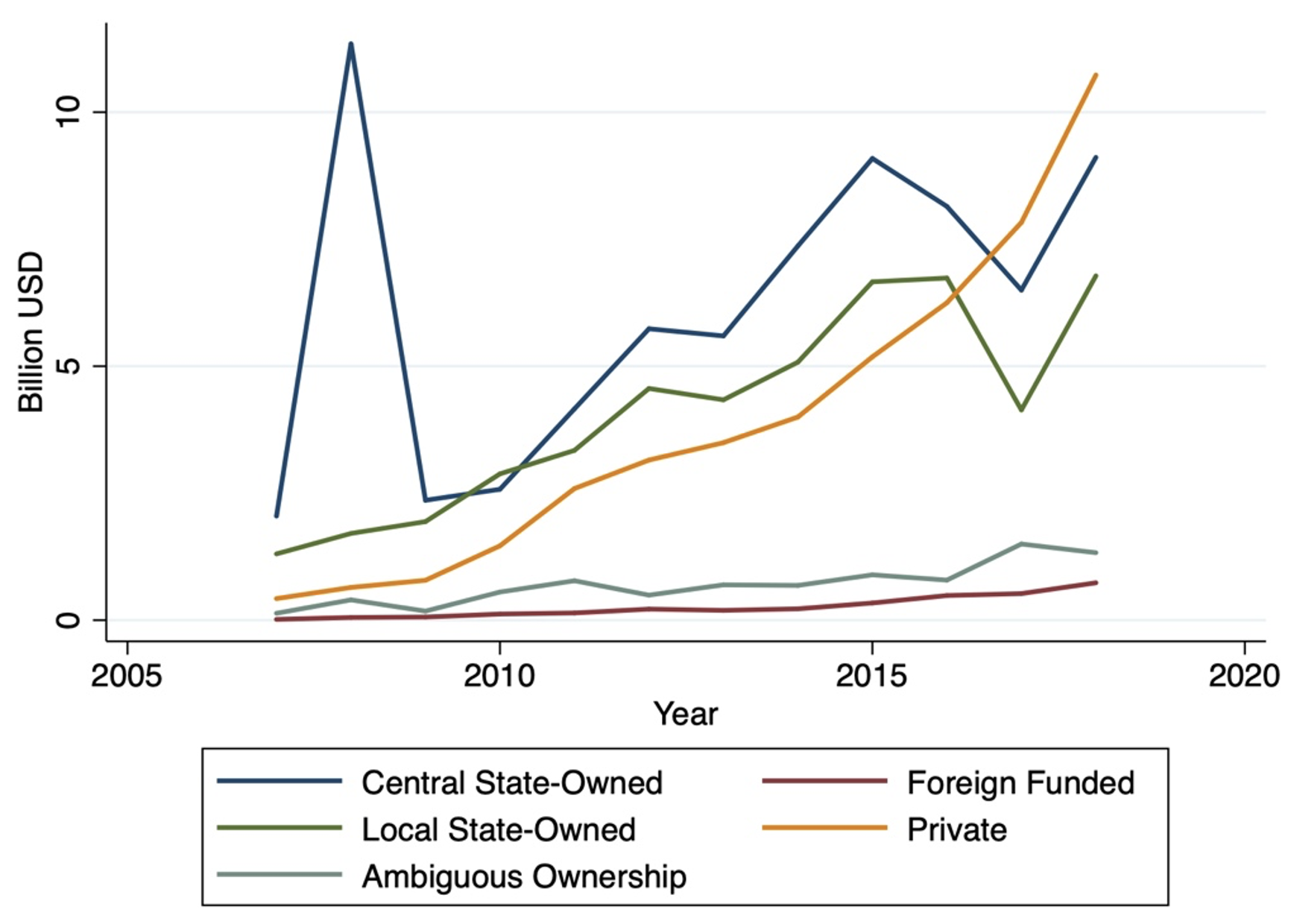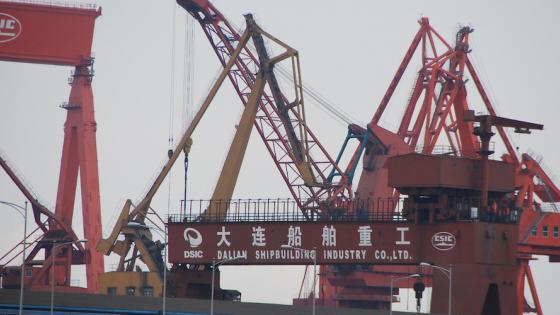Each year, governments worldwide spend an enormous amount of money subsidising businesses. But few spend like China. It is estimated that China spends between1.7% and 5% of its GDP on industrial policies (SCCEI and CCA 2022).
China’s industrial subsidies have caused considerable controversy, both internationally and domestically. Trading partners have criticised China for favouring indigenous Chinese firms when giving out subsidies (Haley and Haley 2013), thereby giving them an unfair advantage over foreign companies in the race to dominate the technologies of the future. Within China itself, government subsidies to firms remain equally controversial. While supporters argue that corporate subsidies are necessary for China to upgrade its industries and achieve technological self-sufficiency, critics say that the Chinese government’s strong preference for large state-owned enterprises and national champions has disadvantaged private and small and mid-sized enterprises.
The principal economic rationale for government subsidies is market failure (Schwartz and Clements 1999). The problem, however, is that giving firms taxpayers’ money is often not a simple remedy for market failures. Misallocated government subsidies can actually cause even more market distortions (Wei et al. 2021, Krugman 1983, Barwick et al. 2019, Kalouptsidi et al. 2019). Prior research points to a broad range of impacts of government subsidies on productivity (e.g. Girma et al. 2007, Van Reenen 2012, Criscuolo et al. 2019, Rotemberg 2019). In a recent paper (Branstetter et al. 2022), we peek into the black box of government subsidies to businesses in the context of China.
We take advantage of the information disclosure requirements regarding direct subsidies for listed firms in China. Starting in 2007, Chinese law has required listed companies to disclose information on the amount of government subsidies received over the prior financial year and the reasons for these subsidies in the notes to their official financial reports to investors. Since these financial statements are reviewed by independent auditors before being released to the public, our subsidy data should be reasonably reliable. Our sample includes all firms listed on the Shanghai and Shenzhen stock exchanges from 2007 to 2018 except financial services firms, for which computation of productivity presents a number of challenges. Figure 1 shows a general picture of the subsidy distribution of our sample across time and firm ownership types. The surge in subsidies to state-owned enterprises in 2008 reflects part of the Chinese government’s aggressive fiscal response to the beginning of the global financial crisis (Lardy 2019). As one can see, government subsidies have generally been increasing over the past decade, the bulge in 2008 notwithstanding.
Figure 1 Direct subsidy distribution by firm ownership over time
Using Google BERT, along with manual validation, we further categorise these subsidies into seven groups according to the brief descriptions of their nature. We then relate these aggregated and categorised subsidies to firms' productivity. Specially, we explore the following questions:
- Which firms are likely to get higher subsidies – those with higher productivity or lower productivity?
- Does the receipt of subsidies, especially those related to R&D and innovation or industrial and equipment upgrading, raise firms’ productivity in subsequent years?
- Alternatively, does the receipt of subsidies raise employment?
We conduct a two-stage analysis. In the first stage, we estimate standard Cobb-Douglas production functions separately by industry, and compute total factor productivity (TFP) for each firm in each year. In the second stage, we seek to understand the relationship between government subsidies and estimated TFP, using a number of different regression approaches.
Our analysis provides no evidence that the Chinese government consistently ‘picks winners’. There appears to be a statistically significant negative correlation between subsidies and TFP, and a robust positive correlation between subsidies and firm size (as measured by the firm's total assets) and between subsidies and net profit. These results indicate that, overall, subsidies are given to larger and more profitable, but less productive firms.
We also find little evidence that receiving a subsidy is correlated with subsequent growth in TFP. When we aggregate across subsidy types, total subsidies appear to have a statistically significant negative impact on subsequent TFP growth. When we disaggregate across subsidy types, we find that even subsidies given out in the name of R&D and innovation promotion or industrial and equipment upgrading have no measured, statistically significant positive effect on firms’ productivity growth.
On the other hand, receiving a subsidy does seem to be correlated with an increase in firms’ employment. When we aggregate across subsidy types, we find that current subsidies appear to have a positive impact on current employment levels, while the prior year’s subsidies seem to have a negative impact on current employment, potentially indicating that firms might be strategically manipulating employment numbers to get subsidies. In other words, firms are temporarily increasing hiring during the period when they receive subsidies, then cut back on employment during the next period. This is consistent with the view that political considerations might outweigh efficiency considerations in the allocation of direct subsidies in China.
While perhaps surprising to China’s industrial policy advocates and those seeking to imitate China abroad, these findings likely reflect the underlying complexity and ambiguity in Chinese government subsidy programmes. Confidential interviews conducted with consultants and firm managers based in three eastern Chinese cities reveal that Chinese firms increasingly rely on specialised government subsidy application agents and brokers to navigate the complicated web of subsidy programs. These agents and brokers are commissioned to figure out their clients' eligibility for various subsidies offered by multiple levels of government and prepare all the paperwork on clients' behalf. Given these practices, company managers may themselves have a limited understanding of exactly which subsidy programmes their firm is benefitting from or what the original policy goals of those programmes were. Instead, firms are relying on consultants to milk the subsidy system, without necessarily altering their real business plans in the ways the local and national government architects of the subsidy programs may have intended.
China has seen a recent decline in productivity growth (e.g. Bai and Zhang 2017, Brandt et al. 2020, Wu 2020) . Many of these authors view increasing government intervention in China as one reason for this deceleration, although there are certainly other causes. Our findings do provide some evidence for this argument. Our research suggests that current subsidy programmes might not be the right solution for China to meet the challenge of economic slowdown in the face of an ageing population, a declining workforce, and mounting evidence of diminishing returns to capital investment.
References
Bai, C–E and Q Zhang (2017), “Is the People’s Republic of China’s Current Slowdown a Cyclical Downturn or a Long-Term Trend? A Productivity-Based Analysis”, ADBI Working Paper.
Barwick, P J, M Kalouptsidi, and N Bin Zahur (2019), “China’s Industrial Policy: An Empirical Evaluation”, NBER Working Paper No. 26075.
Brandt, L, J Litwack, E Mileva, L Wang, Y Zhang, and L Zhao (2020), “China’s Productivity Slowdown and Future Growth Potential.”
Branstetter, L G, G Li, and M Ren (2022), “Picking Winners? Government Subsidies and Firm Productivity in China”, NBER Working Paper No. 30699.
Criscuolo, C, R Martin, H G Overman, and J Van Reenen (2019), “Some Causal Effects of an Industrial Policy”, American Economic Review 109(1): 48–85.
Girma, S, H Görg, and E Strobl (2007), “The Effect of Government Grants on Plant Level Productivity”, Economics Letters 94(3): 439–44.
Haley, U C V and G T Haley (2013), Subsidies to Chinese Industry: State Capitalism, Business Strategy, and Trade Policy, Oxford University Press.
Kalouptsidi, M, N Bin Zahur, and P J Barwick (2019),“Industrial policy: Lessons from China”, VoxEU.org, September.
Krugman, P (1983), “Targeted Industrial Policies: Theory and Evidence”, Industrial Change and Public Policy, 123–55.
Lardy, N R (2019), The State Strikes Back: The End of Economic Reform in China?, Peterson Institute for International Economics.
Rotemberg, M (2019), “Equilibrium Effects of Firm Subsidies”, American Economic Review 109(10): 3475–3513.
SCCEI and CCA (2022), China’s Industrial Policy Roundtable Summary Report.
Schwartz, G and B Clements (1999), “Government Subsidies”, Journal of Economic Surveys 13(2): 119–48.
Van Reenen, J (2012), “Industrial policy works for smaller firms”, VoxEU.org, Febuary.
Wei, S-J, J Xu, G Yin, and X Zhang (2021), “Bureaucratic Bean Counting and Patent Subsidies: A Welfare Evaluation of China’s Pro-Innovation Program”, Working Paper.
Wu, H X (2020), "Losing Steam? An Industry Origin Analysis of China’s Productivity Slowdown”, in B M Fraumeni (ed.), Measuring Economic Growth and Productivity, Elsevier.







